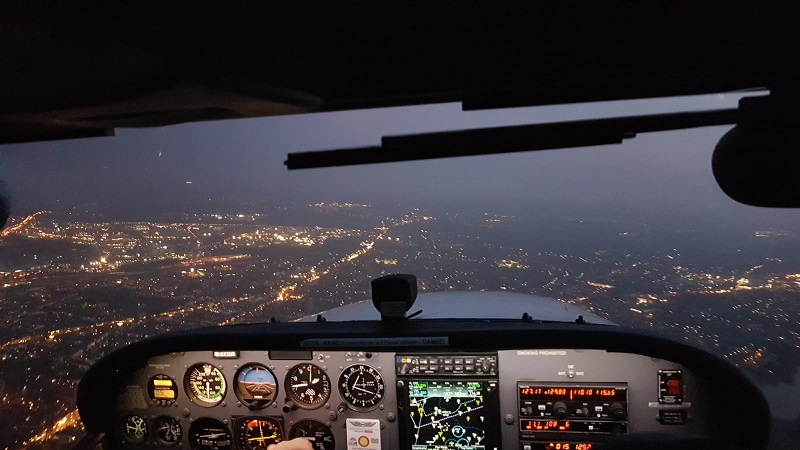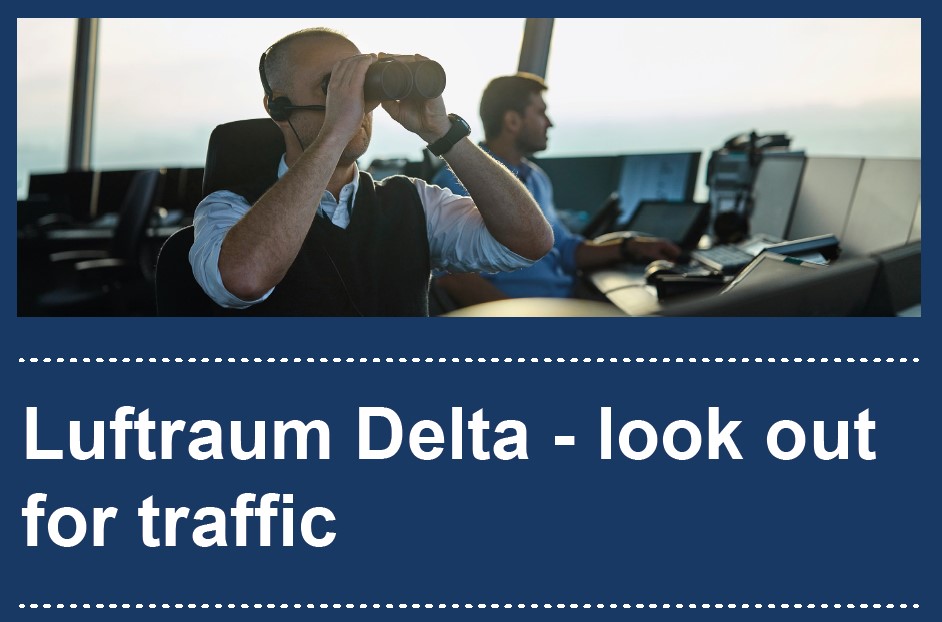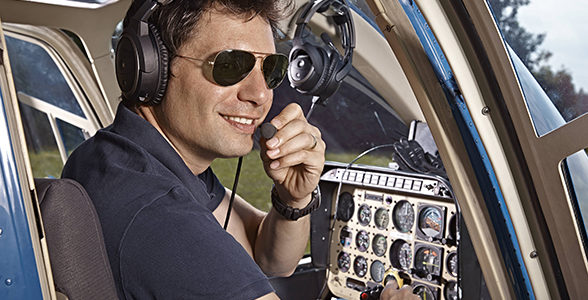Night flight (Night-VFR): Fascinating but demanding and only with entitlement

Night flying means flying according to visual flight rules during the legal nighttime hours—that is, from 30 minutes after sunset to 30 minutes before sunrise. This type of flying offers special impressions: cities, villages, and other aircraft are visible from afar thanks to their lights, and the aircraft often flies particularly smoothly due to the lack of thermals. At the same time, the procedure is similar in some respects to instrument flying, as you are more reliant on the instruments, especially during takeoff and course changes.
Dangers and risks
However, night flying does present some special challenges and risks. Engine failure is much more critical in the dark because it is difficult to identify suitable emergency landing sites. There is also a risk of seeing obstacles or mountain ranges too late, which is why minimum safety altitudes must be strictly adhered to. Optical illusions—such as the “black hole effect” when approaching unlit terrain—can cause pilots to misjudge their altitude. The human eye takes about 30 minutes to fully adjust to darkness, and bright light can immediately negate this effect. In addition, the lack of a natural horizon can make pilots more prone to dizziness or loss of spatial orientation. In such situations, it is important to rely consistently on the instruments.
The weather also plays an even more important role than during the day. A small difference between temperature and dew point increases the risk of fog or haze, and VFR flights “on top” are generally taboo at night. Therefore, personal weather minimums for night flying should be doubled or even tripled.
Authorization for night flying
This is a special form of VFR flying that has its own legal requirements, equipment, and training requirements. Night VFR refers to flying according to visual flight rules at night, which requires a night rating (NIT). This additional qualification for private pilots (PPL) allows flights in the dark that would otherwise not be permitted between sunset and sunrise. The training comprises at least five flight hours, including cross-country flights and landings, and is usually entered in the pilot’s license without the need for an additional test flight.
Planning and execution
Overall, night flying is a particularly impressive but also demanding form of VFR flying. However, with careful preparation, the right equipment, and a clear awareness of the specific risks, it can be a fascinating experience. It is important to be able to control the aircraft safely at night using only the instruments. Some nights are so dark that flying at night feels almost like pure instrument flying.
The flight route should also be planned so that a landing is possible in the event of engine failure. With the usual landing lights, only the last few meters above the ground are visible, which is why a route over areas that are as suitable for landing as possible should be chosen. And last but not least, the same applies to night flights: altitude is always your friend.
Planning a night flight: The PAVE checklist
The PAVE checklist is a preventive safety check that systematically assesses the risk before a flight. It helps you make informed decisions and recognize when a flight should be postponed or canceled. Many pilots use the PAVE checklist when preparing for a flight. However, you can also use it for normal flights.
P – Pilot
- Required night flight authorization?
- Required current status and night landings?
- Rested and alert (greater fatigue in the evening)?
- Prepared for reduced depth perception and night flight illusions?
- Is your vision as good as it was on your last flight?
A – Aircraft
- Properly equipped and airworthy for night flights?
- Increased fuel reserve in case of diversion?
- Personal equipment for night flights?
V – Environment
- Weather – limited visibility and clouds?
- Risk of icing?
- Can moonlight be expected, or will it be completely dark?
- Does the route pass over illuminated areas (settlements) or completely dark areas (sea, forest, or mountains)?
- Are the departure and destination locations sufficiently illuminated?
- Have I chosen a route with potential emergency landing areas?
E – External Pressure
- Time pressure to return to the departure airport?
- Have I communicated realistic expectations to the passengers?
In short: night = higher risk. Always plan for additional reserves for weather, fuel, altitude, and decision time.
Jetzt registrieren!
Um alle Funktionen zu nutzen, erstellen Sie einfach ein neues Konto. Dann können Sie Artikel für später vormerken, Themen abonnieren und regelmäßige Aktualisierungen für Ihre Themen per E-Mail erhalten.






